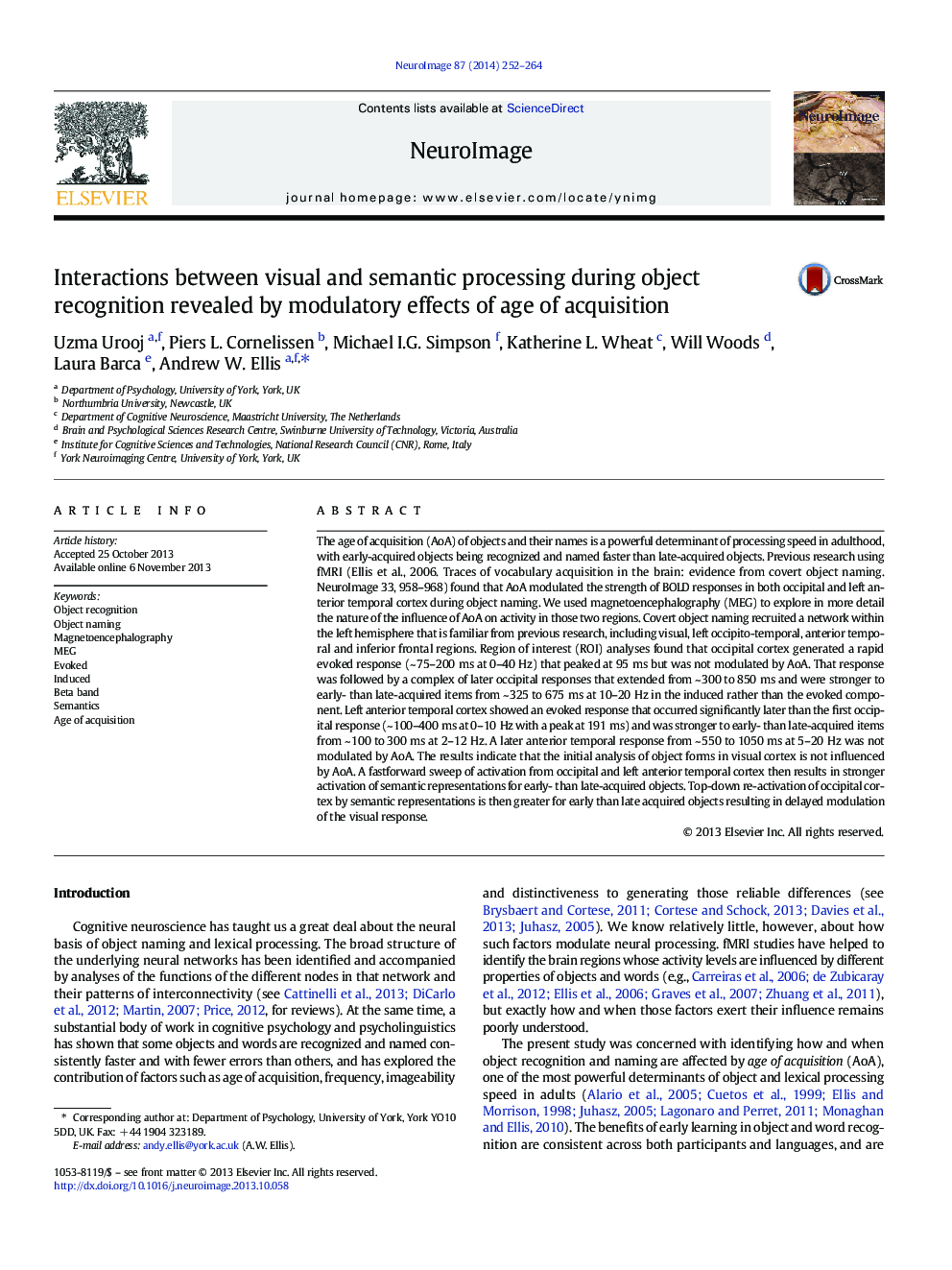| کد مقاله | کد نشریه | سال انتشار | مقاله انگلیسی | نسخه تمام متن |
|---|---|---|---|---|
| 6027926 | 1580918 | 2014 | 13 صفحه PDF | دانلود رایگان |
- Objects activate semantic representations in anterior temporal cortex within 200Â ms.
- Semantic activation is stronger to early than late acquired objects.
- Visual cortex is modulated by AoA later in time suggesting top-down re-activation.
- Top-down modulation by AoA occurs mainly within the beta band.
- Visual and semantic effects of AoA explain behavioral and neuropsychological results.
The age of acquisition (AoA) of objects and their names is a powerful determinant of processing speed in adulthood, with early-acquired objects being recognized and named faster than late-acquired objects. Previous research using fMRI (Ellis et al., 2006. Traces of vocabulary acquisition in the brain: evidence from covert object naming. NeuroImage 33, 958-968) found that AoA modulated the strength of BOLD responses in both occipital and left anterior temporal cortex during object naming. We used magnetoencephalography (MEG) to explore in more detail the nature of the influence of AoA on activity in those two regions. Covert object naming recruited a network within the left hemisphere that is familiar from previous research, including visual, left occipito-temporal, anterior temporal and inferior frontal regions. Region of interest (ROI) analyses found that occipital cortex generated a rapid evoked response (~Â 75-200Â ms at 0-40Â Hz) that peaked at 95Â ms but was not modulated by AoA. That response was followed by a complex of later occipital responses that extended from ~Â 300 to 850Â ms and were stronger to early- than late-acquired items from ~Â 325 to 675Â ms at 10-20Â Hz in the induced rather than the evoked component. Left anterior temporal cortex showed an evoked response that occurred significantly later than the first occipital response (~Â 100-400Â ms at 0-10Â Hz with a peak at 191Â ms) and was stronger to early- than late-acquired items from ~Â 100 to 300Â ms at 2-12Â Hz. A later anterior temporal response from ~Â 550 to 1050Â ms at 5-20Â Hz was not modulated by AoA. The results indicate that the initial analysis of object forms in visual cortex is not influenced by AoA. A fastforward sweep of activation from occipital and left anterior temporal cortex then results in stronger activation of semantic representations for early- than late-acquired objects. Top-down re-activation of occipital cortex by semantic representations is then greater for early than late acquired objects resulting in delayed modulation of the visual response.
Journal: NeuroImage - Volume 87, 15 February 2014, Pages 252-264
